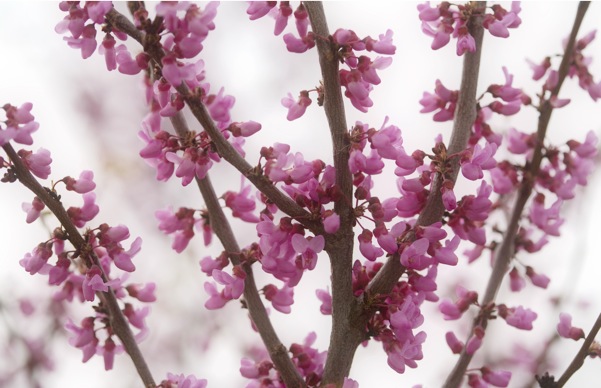Cloudy Weather and Flowers
These Oklahoma Redbuds (cercis reniformis) are now blossoming again, and they are spectacular! My appreciation for spring time has increased dramatically since I started photographing flowers, and this is a fantastic time of year for doing flower photography.
Direct sunlight can often provoke flowers to put on a tremendous demonstration with open petals, shouting vivid colors from their beautiful curves. I do enjoy these circumstances and, in a recent blog entry, discussed how such conditions can be used to backlight flowers for even more intense coloration. However, I often prefer the results I get on a cloudy day. Contrast is muted, colors are more pastel, forms are simpler, and there is a softer, understated beauty that whispers to my lens.
This image was captured almost exactly one year ago on a cloudy day in the early afternoon. Because of the cloud cover, the time of day was less critical for the direction and color of the light (I was clearly outside of the “golden hours”). I also didn’t have to worry about blown-out highlights or muddied shadows that can easily result from the high contrast of direct sunlight. I was able to blur the background with a relatively large aperture of f/4.0 on a 100mm macro lens. Since these blossoms were on a tree, I was able to use a low angle (aiming slightly upward) without having to work from ground level. This angle helped in a number of ways: (1) I was able to avoid having any of the nearby houses become distractions in the background, (2) I could make the plane of focus approximately parallel to the angle of the branches, thus getting more blossoms in focus, and (3) I gained a nicely diffuse white background to contribute to the high-key effect I sought. The net result is almost monochromatic, with the pink of the blossoms being the only significant color in the image.
I am fortunate to have very nice tools at my disposal, but this image could have been produced with very modest equipment. A simple camera (which allows control of the depth-of-field through setting a large aperture), a tripod, and a desire to aim higher were all that was really needed.

Tip of the Week
2007.04.16

